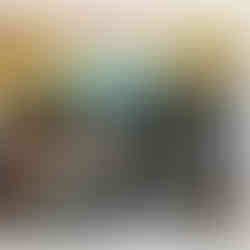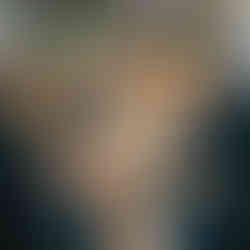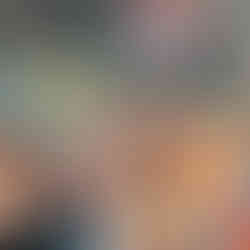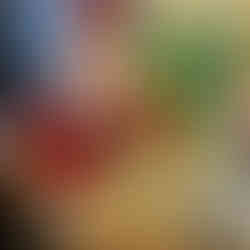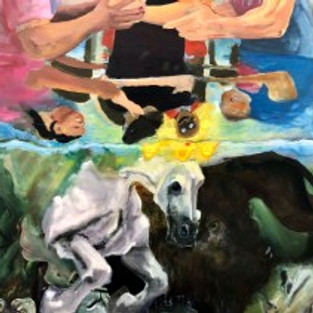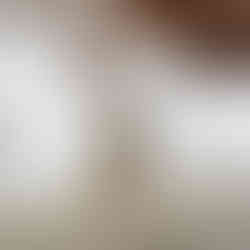
Celeste Dupuy-Spencer, The Chiefest of Ten Thousand, 2018 at Nino Mier Gallery. Photo courtesy of the gallery.
Celeste Dupuy-Spencer: The Chiefest of Ten Thousand
Nino Mier Gallery
Closed on November 3, 2018
By Shana Nys Dambrot
Paintings by Celeste Dupuy-Spencer are wicked and fraught, elusive and dense, saturated and shadowy tableaux. She wields an edgy, folkloric style that is both naive and sophisticated, depicting figures in landscapes and interiors enacting versions of the American experience. Throughout interlacing series, she chronicles contemporary communities that for lack of a better term formulate what appear to be variations on “the forgotten America” in a way — rural, working class, blue collar, townie. House parties and forest fires, religious healers and amateur musicians, scripture and satire — the works on view at Nino Mier Gallery combine an uneasy appreciation for the symbolism and homespun pageantry of religious dogma and the exceptionally ordinary details that give individuals their memories and build their character.
In her latest show, she turns this emotionally earnest, judgement-free, eccentrically nuanced Op-Ed page reverence on the Evangelical, Revival-style extreme religiosity of certain segments of the U.S. population. Drawn both from her personal experiences and images from the media and news reels, she mixes up pictures of religious ceremonies, rituals, prayers, and performances with some art-school students and zesty same-sex love-making, for balance. For example the correspondences of exaggerated anatomy, actions of intimate touching, and sense of public/private spectacle that bounce between “Through the Laying of Hands (Positively Demonic Dynamism)” and “The Chiefest of Ten Thousand (Sarah 2)” speak to each other in a rush of tongues. Dupuy-Spencer’s array of spatial planes and mark-making modes accumulates passages and accents from the sparse to the thick, wavering, and ephemeral, demonstrating gestural abstraction and hyper-stylized renderings. But in her content she examines the distortions of passion and the darkness and hypocrisy of our shaming and shameless culture.
In the mundane operatics of the monumental genre scene “Dutchess County Border (Matriarchs of the 90’s Line)” the artist also gives us sparks of beer-infused social intimacy, ironic art student humor, and domestic adventure that animate both everyday experiences and watershed moments. A kind of counterpart, “Don’t Lose Your Lover” depicts a rapidly advancing forest fire cresting a foothill. A stampede of panicked woodland creatures like deer, owls, and foxes rushes away from it, across the pictorial space in the foreground. The back of the valley is obscured by night and thick smoke. In between, a car is parked and in the bright beam of its headlights, a young couple is making out like it’s the end of the world. It’s romantic and silly and pastoral and frightening; the overall effect is like an Outsider Thomas Cole, a cautionary homage.
Nature itself plays a huge part in other works as well, both in the form of a veritable menagerie of wild and domestic animals, and as sweeping landscape settings, sometimes both. A lion and a lamb literally lie down together underneath a piano in the small work “In the Racquetball Room” and a rat sits atop a volume of spiritual verse in “And Joy Shall Be the Crown” — both seeming to acknowledge and poke fun at the role of religious overtones in society. A wary cat and dog watch their parent in bed in “Sarah 2” and animal spirits lurk beneath the surreal surface in “Darkness Is Not Dark (Light Shines As Day).”
Even with the one work in which American politics are addressed directly, “In the White House (perfectly demonic dynamism)” demonstrates an obscure ambivalence toward the subject. Is it the religion itself being critiqued as embodied by Trump, or is an indictment of Trump’s cynicism in hijacking and faking religious feeling for his career? On whose behalf would indignation rightfully be felt? That and related observations recur, albeit more gently, throughout the show, in which issues of spiritual and cultural tribalism take center stage in the narrative, but also in the style and aesthetic of the work itself. By addressing paradoxical questions in chimerical visual form, Dupuy-Spencer generates the same cognitive dimension in both style and substance. Her social explorations are as frank and brave and subversive as her relationship to art history. They ask all the right questions, but they don’t give you any easy answers.
Mier Gallery
7277 Santa Monica Blvd., West Hollywood.
#losangeles #california #losangelesartist #NinoMierGallery #art #painting #CelesteDupuySpencer #westhollywood #losangelesart #contemporaryart #southerncalifornia #abstract #artgallery #gallery #shananysdambrot #artandcake #artopening #assemblage #artexhibition #installation #ArtandCakeLA #TheChiefestofTenThousand #fineart #artists #artist #soloshow #mixedmedia #arts #artreview #artmagazine #ArtandCulture

